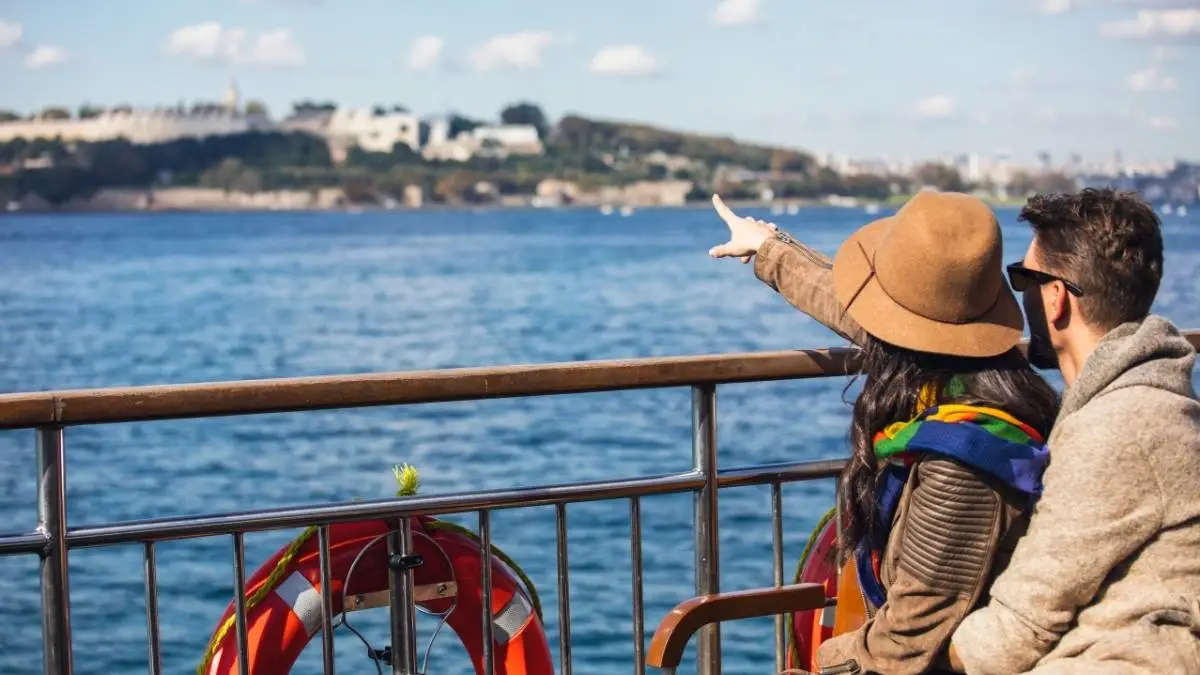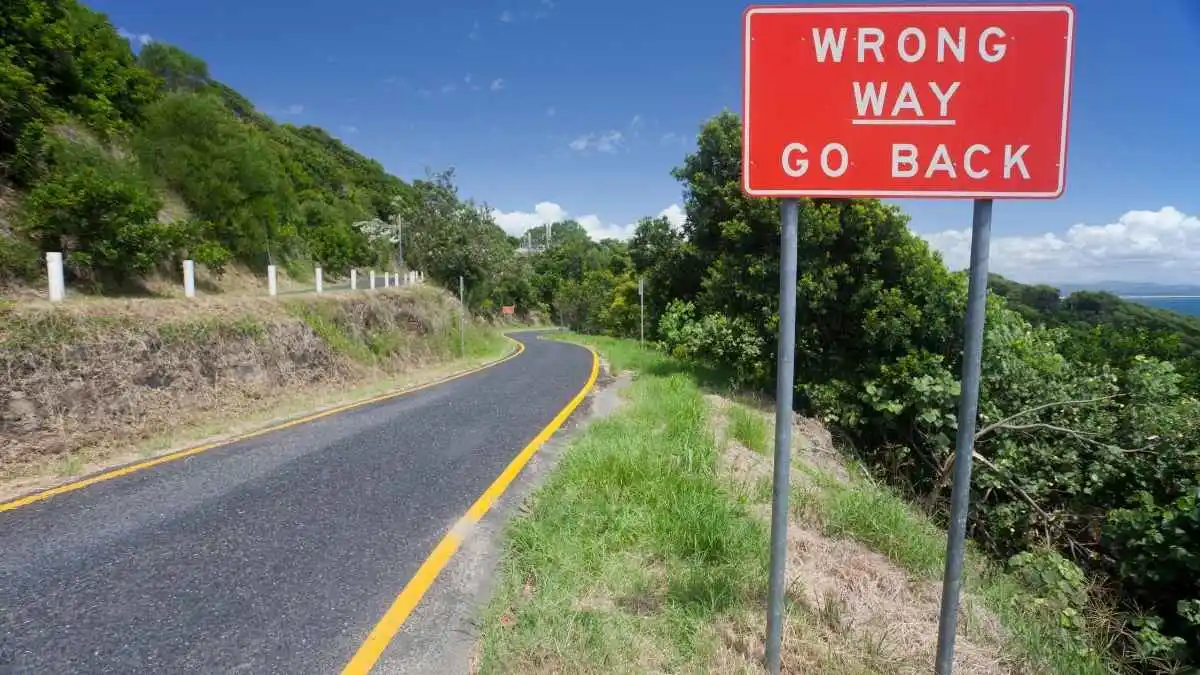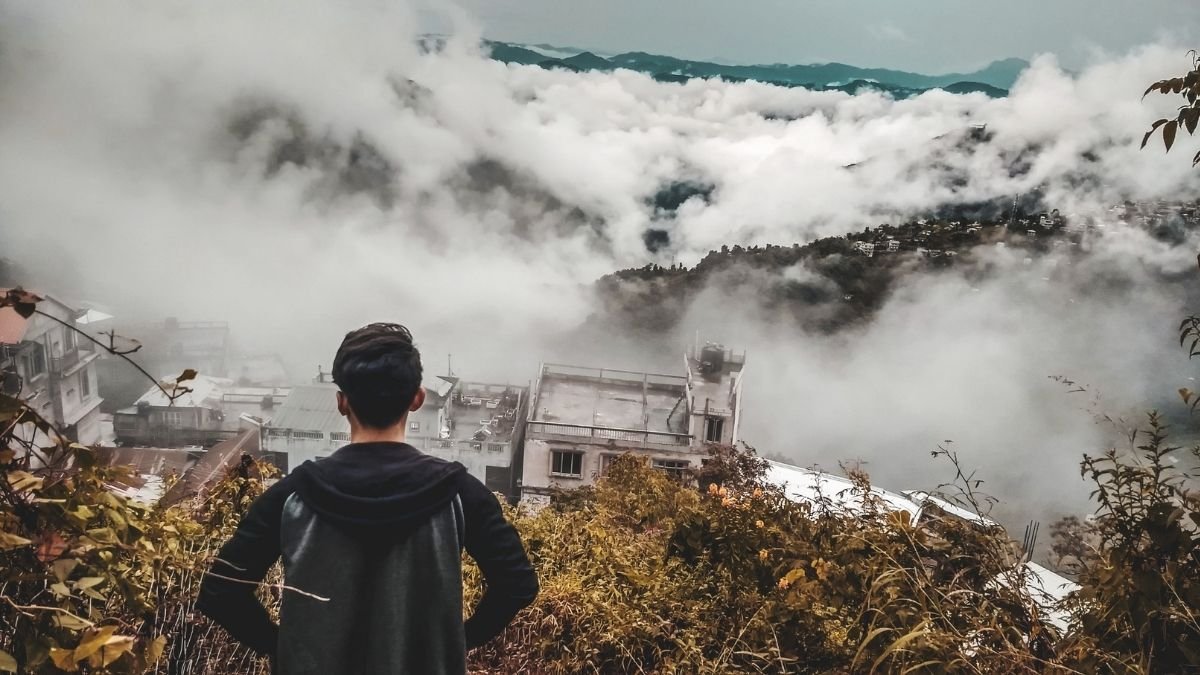Your vacation photos probably feature beaches or mountains. For millions of others, the new must-have shot is in front of a bombed-out building in Ukraine or inside the Chernobyl Exclusion Zone.
This is dark tourism, and it has exploded from a strange hobby into a multi-billion-dollar industry. Younger generations are leading the charge, turning sites of recent tragedy into bucket-list destinations.
You might be wondering why anyone would do this. Is it about learning history, or is it just for a shocking social media post?
This report gets to the heart of this unsettling boom, exploring the real reasons people go, the most extreme places they visit, and the tough ethical questions you are likely already asking.
Why Is Dark Tourism So Popular?

To get why millions of people spend their free time in places of suffering, you have to look deeper. It’s a mix of real human needs, big changes in generations, and the money that has turned sadness into something you can sell.
What Makes People Visit Tragic Places?
You might think people who visit sad places are just curious about death. But the data shows there’s more to it.
A desire for a thrill does play a role for some. But the main reasons seem to be deeper. A 2022 survey of American travelers found the top motivations were to learn (52%) and to honor the victims (47%).
This shows people are looking for something real in a world of fake, commercial travel.As expert Dr. Lea Kuznik says, reasons range from “curiosity and horror to empathy, remembrance and education”.
Dark tourism spots offer a direct link to what feels like “real” history. Walking through a former concentration camp gives you a feeling that books can’t. It’s a way to get to the “emotional heart of impactful past events”.
These trips also act like a modern pilgrimage. In a world with fewer traditional ways to think about death, these sites have become new places for reflection. Visiting a place of great loss can, strangely, make people feel more alive.
It can give a “profound sense of perspective on life and humanity”. Researchers have noted these sites can offer “potential spiritual journeys for the visitors who wish to gaze upon real and recreated death”.
This changes the view of the dark tourist. They are not just watching. They are a modern pilgrim looking for meaning and a connection to the dead. Being there in person helps build empathy and makes sure the stories of the victims are not forgotten.
Why Is Gen Z Driving This Trend?
Gen Z is the biggest group visiting these sites. A full 91% of them have done it. This is a key part of the trend. As the first true digital generation, their connection to world events is different.
They grew up seeing a constant flow of tragedies on their phones. This creates both a closeness and a numbness to it. For them, visiting a place makes it real. It’s not just a picture on a screen anymore.
Social media also pushes this trend. The idea of “‘Insta-tourism’ of tragedy” shows how platforms like Instagram and TikTok create a cycle.
Visiting dark sites gives you unique, “edgy” content that stands out. This content then makes the places more popular, which brings more visitors.
But it’s not just about posting online. For many in Gen Z, it’s a way to push back against the perfect, fake image of influencer culture. Dark sites are raw and real in a way a fancy resort is not.
This creates a strange situation. The trip to a dark site helps build an identity. It shows you care about serious world issues. But you often show this on the same platforms that promote superficial content.
The selfie at Auschwitz is the perfect example of this conflict. It’s an attempt to be part of a deep historical story while also making that story a personal background.
A $40 Billion Industry Built on Sadness
The reasons people go on these trips are backed by a strong and growing market. The dark tourism market is worth tens of billions of dollars in 2025.
It is expected to keep growing through 2033. This has turned tragedy into a formal business with marketing, booking sites, and different types of customers.
The market has many parts. Holocaust tourism is still a major piece, with a 29.6% market share because of its historical weight.
But people’s interests are changing. For Americans, war and disaster tourism are the most popular types, with 56% of people interested in each. Other areas like nuclear tourism and battlefield tourism are also growing.
Couples are the largest group of dark tourists at 40.4%. They are often drawn by a shared interest in history.
Solo travelers are next, often looking for personal reflection. While Europe has been a top spot because of its many World War II sites, the Asia-Pacific area is now the largest and fastest-growing market, with a 32.4% share.
This is because of growing interest in sites related to the Vietnam War, the Khmer Rouge in Cambodia, and Japan’s nuclear history.
The way people book is also changing. Booking directly with tour companies is still big (64.2%), but online booking sites now make up 43.6% of the market. This makes it easier than ever to find and visit these places.
| Metric | Value / Range (2025 Est.) | Key Driver / Context | Source(s) |
| Market Valuation | $32.76 billion – $40.2 billion | Increasing demand for authentic, educational, and experiential travel. | |
| Projected CAGR (2025-2033) | 2.8% – 3.1% | Growing global awareness, media influence, and accessibility. | |
| Dominant Segment (by Type) | Holocaust Tourism (29.6% share) | Enduring historical significance and established educational infrastructure. | |
| Most Appealing Segments (US) | War & Disaster Tourism (56% each) | High media visibility and connection to national or global historical events. | |
| Dominant Segment (by Tourist) | Couples (40.4% share) | Shared interest in historical and meaningful travel experiences. | |
| Largest Regional Market | Asia-Pacific (32.4% share) | Emerging interest in sites related to regional conflicts and atrocities. | |
| Primary Booking Channels | Direct Booking (64.2%) / Online (43.6%) | Preference for specialized operators and the convenience of digital platforms. |
Where People Go – A Look at Top Dark Tourism Spots

To get a real sense of this trend, you need to look at the places themselves. The most extreme and changing frontiers of dark tourism are nuclear disaster sites and active war zones. They show how we package, sell, and consume our darkest moments.
Visiting Nuclear Disaster Zones: Chernobyl & Fukushima
Chernobyl and Fukushima are names we link with nuclear disaster. Yet, they have become two of the world’s most popular dark tourism spots.
They show two different ways of handling disaster tourism. One is a show of decay frozen in time. The other is a story of strength and recovery.
Chernobyl – A Ghost of Today
Before the 2022 invasion of Ukraine, the Chernobyl Exclusion Zone was seen as the “very pinnacle of dark tourism”. The 2019 HBO show made it famous, and visitor numbers jumped to 100,000 a year.
A day tour from Kyiv was a strange trip into a world without people. You could explore abandoned schools in the ghost city of Pripyat, see the famous Ferris wheel, and get a look at the cover over the damaged Reactor No. 4. It was a chillingly beautiful picture of a world without us.
For anyone thinking of going in 2025, Chernobyl is a big and dangerous question. The Exclusion Zone is an active war zone. Russian forces took over the area in 2022 and caused damage.
All official tourism has stopped. But if you search online, you’ll see something surprising. Many tour companies like SoloEast, Yonder Tours, and Adventure UA are still advertising and taking bookings for Chernobyl tours in 2025.
This brings up some serious questions. Are these real bookings for when the war ends? Or is it a trick to take your money? You need to be very careful.
Because of this, the market has changed. Tour companies that used to focus on the nuclear disaster now offer something even darker: “De-Occupied Cities Tours”.
For about $180, you can now visit the sites of recent war crimes in Bucha, Irpin, and Hostomel. This connects the old Soviet disaster to the current war, making Ukraine a dark tourism spot with many layers.
Fukushima – A Careful Return
Fukushima is very different from Chernobyl. Tourism in the Fukushima exclusion zone is a carefully managed and educational experience.
The story here is not about decay, but about recovery and human strength. Safety is the top priority. Tours point out that the radiation you get from a six-hour visit is very low, about one-tenth of a dental X-ray.
A 2025 tour to Fukushima costs about JPY 10,000 (around $65) and focuses on learning. You start from JR Namie or Odaka Station and are guided through a place that is rebuilding.
The tour includes a visit to a tsunami-damaged school, now a memorial, and a museum about the disaster. You also drive along Route 6, which passes through the exclusion zone.
You can see the Fukushima power plant from a distance and the thousands of bags of contaminated soil.
The tour also shows you the future. You’ll see new houses for people who are returning and the large solar panels that are part of Fukushima’s plan to use 100% renewable energy by 2041. A visit to Fukushima is a conversation with survivors, a lesson in how a community rebuilds.
Vacationing in War Zones
The most debated and fastest-growing part of dark tourism is visiting active or recent conflict zones. This is different from visiting old battlefields like Gettysburg. Modern “war tourism” deals with current suffering.
It blurs the line between tourist, witness, and political supporter. This area is splitting into two types: high-risk “hot war” travel for a few, and government-approved “post-conflict” tourism, which is becoming a common way for countries to recover.
Tourism on the Edge – “Hot War” Travel
A few special tour operators arrange travel to active war zones. They serve people who want an experience that is far from normal tourism.
The reasons are complex. It’s often not about seeking thrills but about a desire to see the truth, show support, or get a real picture of events that news reports can’t provide.
In Ukraine, this has become “military tourism” to frontline cities like Odesa. For a price, you can see the damage from drone strikes and talk to soldiers. It’s sold as a “dialogue with truth,” not a thrill ride.
After the October 7 attacks in Israel, “solidarity tours” have started. They take visitors to the sites of the massacres, often with survivors as guides. These tours are political. They put the tourist on one side of a conflict and present their visit as an act of support.
This high-risk travel is handled by a few niche companies:
- Rocky Road Travel offers trips for 2025 and 2026 to places like Syria, Afghanistan, and Iraq. Their “Essential Syria Tour” costs $1490 and includes visits to damaged cities like Homs and Aleppo.
- Untamed Borders focuses on what it calls “some of the world’s most interesting and inaccessible places.” They have trips listed for 2025 to Mogadishu (Somalia), Yemen, and Libya.
- War Zone Tours, started by former security expert Rick Sweeney, was a leader in this area. Sweeney says his trips to places like Iraq and Gaza are not about watching. They are a way to “actually interact with the people, talk to families that are living through this,” and see a different side than the media shows.
From Scars to Souvenirs – Post-Conflict Tourism
While “hot war” tourism is for a small group, tourism in places that have recently been in conflict is becoming a key tool for economic recovery.
A country’s painful past is turned into its most valuable tourist attraction. This creates a story of strength that brings in a wider audience.
Rwanda is a strong example. After the 1994 genocide, the government focused on high-end tourism.
By 2007, tourism was the country’s top money-maker, more than coffee and tea. The Kigali Genocide Memorial is a key part of this. It brings in thousands of visitors each year.
The experience is presented as “historical tourism,” a needed look at the past to see the country’s path to healing.
You can find a similar model in Sarajevo, Bosnia and Herzegovina. Here, “war-themed” walking tours of places like Sniper Alley are often led by survivors.
This makes the experience real and gives the local community control over their own story. The tourist is not just a customer of a sad story but a student in a living history lesson.
In Colombia, post-conflict tourism is taking an even more interesting turn. After a 2016 peace deal, areas once controlled by FARC rebels opened to tourists. In a huge change, many former fighters have become tour guides.
They lead hikes in the same areas they once controlled by force. This model turns the skills of war into a peaceful, lasting business. It shows how tourism can be a powerful tool for rebuilding a society.
Is Dark Tourism Wrong? The Big Questions

The rapid growth of dark tourism, especially into places of recent tragedy, brings up some tough ethical questions.
When pain is packaged into a tour and grief becomes a background for social media, the line between being a witness and just watching gets blurry. This section looks at the business of tragedy, the problem with selfie culture, and the basic moral questions about the dark tourist.
Turning Tragedy into a Product
The biggest criticism of dark tourism from experts is that it turns tragedy into a product to be sold. Dr. Philip Stone, a top scholar in the field, says it plainly: “It’s the commercialisation of death”.
This process changes places of deep human loss from sacred memory sites into stops on a tour.
You can see examples of this everywhere. Some are silly, and some are deeply troubling. There are gift shops at the Auschwitz-Birkenau Memorial that sell fridge magnets of the death camp.
Street sellers near Ground Zero in New York offer 9/11-themed snow globes. At the Killing Fields in Cambodia, you can buy replica toy grenades. In some parts of Bali, traditional cremation ceremonies are sold to tourists as soon as someone is known to be dying.
Even places designed for fun, like the Dungeon attractions, package historical tragedy as a thrilling thing to buy.
This creates a big ethical problem. On one hand, it can feel like it’s taking advantage of others’ pain for profit. The way tours are advertised—often as “exciting”—can hide the horror and make visitors treat it like entertainment.
On the other hand, this business is often needed to keep these sites open. The money from tickets, tours, and even gift shops pays for the upkeep and educational programs that keep the memory of these events alive.
Without tourism, many sites, like the Anne Frank House, might fall apart and be lost. This puts everyone in a tough spot, stuck between the need to remember and the messy morals of the system that makes it possible.
The Problem with Selfies at Sad Places
Nothing shows the ethical problems of modern dark tourism better than the “selfie at a site of tragedy.” The rise of “‘Insta-tourism'” has added a new layer to these visits, where the experience is proven and shared on social media.
This practice, as professor Dr. Sarah Clark warns, “risks trivializing serious historical events,” turning them into a hashtag or a photo op.
This behavior is widely disliked, not just by critics but by other travelers. A 2022 survey found that 57% of tourists have a negative view of people taking selfies at these destinations.
There are many famous examples of this bad behavior: tourists balancing on the train tracks at Auschwitz, a group posing with a sex doll at the 9/11 Memorial, and people striking happy poses at the Memorial to the Murdered Jews of Europe in Berlin.
It’s important to get why people do this. It’s rarely because they want to be mean. For many, taking a selfie is an “automated routine,” something they do without thinking in any new place.
Social theories suggest that people often change their behavior to fit the situation. If other people are taking photos, it makes it feel okay, even if it would be wrong somewhere else.
The act can also be a way of showing off the travel experience, a way of proving “I was here”.
No matter the reason, the result is often a shocking image that takes the pain out of context and puts the tourist at the center of a story of loss. This makes the very history they came to honor seem less important.
Are You a Witness or Just Watching?
Beyond the arguments over business and social media is a bigger question: What is the moral position of the tourist? Is visiting a site of tragedy a key act of remembering, or is it just a creepy interest in the pain of others?. This question is at the center of dark tourism’s ethical problem.
Time is a very important factor here. Most people agree that visiting the site of a very recent tragedy just to look around is wrong.
People were angry when tourists rushed to take pictures of the damage in New Orleans after Hurricane Katrina or took selfies with the smoking Grenfell Tower in London. This brings up serious questions about the new trend of tourism to active war zones in Ukraine or recent massacre sites in Israel.
How much time has to pass before a place of pain can ethically become a tourist spot? There’s no easy answer, but the fresh trauma makes the tourist’s presence much more of a problem.
From a psychological view, watching tragedy from a safe place can lead to a person disconnecting morally. To handle their own discomfort, visitors might, without realizing it, see the victims as less than human.
They might see them not as people with lives and hopes, but as parts of a historical show. This small mental shift lets the tourist consume the story of pain without feeling its full emotional weight.
But this whole way of thinking is being challenged by people in the industry. Many site managers and tour guides hate the term “dark tourism.”
They say the term is negative and focuses on death, while their own work is about life, memory, education, and strength. From their point of view, a place like the Kigali Genocide Memorial is not a “dark” attraction but a site of national memory.
This shows a big gap between expert theory and the real work of managing these sensitive places. It makes us rethink the words we use to talk about this trend.
In the end, the ethical problem of dark tourism is not a simple choice between good (education) and bad (watching).
It’s a constant tension between two duties: the duty to remember and the duty to respect the dead. The moment a site like Auschwitz is opened to the public, which is needed to fulfill the duty to remember, it enters the tourism business.
This risks disrespect through commercialization and spectacle. The challenge is not to solve this problem, but to manage it with care and good ethics.


